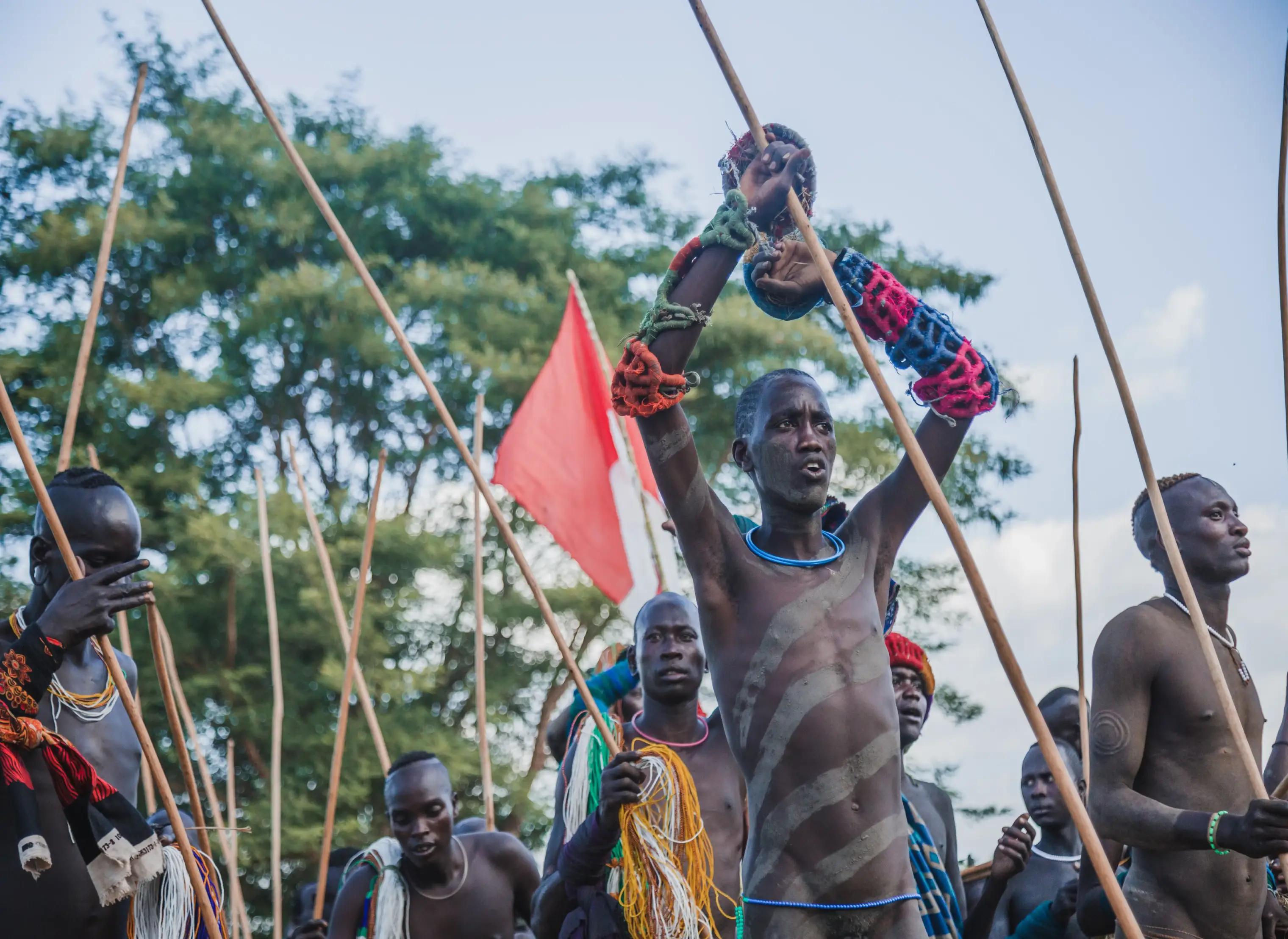

Home to some of the most interesting tribal communities in Africa. Celebrate people's uniqueness and the wide spectrum of diverse cultures. You will see the inhabitants of this distant region, an old crossroads of trade routes that eventually led to the migration and settlement of many ethnic groups.
Visit the Dorze's bee-hive houses, meet the Karo's who paint their bodies and hair, and witness the Hamer men's 'Bull Jumping.' Market town in southern Ethiopia's highlands that serves as a hub for several indigenous ethnic groups. Mursi who puncture their lower lip to insert round or square clay forms to enhance their beauty. Dassanech nomadic lifestyle as well as the extremely unusual decorating and scarification on their body. And, crossing the Omo river by dugout boat, where you'll get great views of the surrounding scenery.
The Mursi tribe is known for their ceremonial dueling, and women put ornate clay disks (debhinya) in their bottom lips as emblems of attractiveness and maturity. When a girl is in her early adolescence, her bottom lip is sliced and the clay disk is used to keep it open until it heals. This incision is then gradually stretched over several months by adding somewhat bigger clay disks each time, with each woman deciding how far to stretch her lip.
Dueling is a sport in which groups of men battle with 2m wooden sticks (donga) until one man falls to the ground or has to retreat due to injuries. These competitions are frequently held over several days and are taken very seriously. The ladies also conduct a dueling ceremony in which they strike each other with iron bracelets (ula). The ula is supposed to be a sign of strength, and only the most powerful women are worthy of wearing it.
The Hamar are particularly known for traditional ceremonies in which women blow trumpets and yell abuses at male family members, who subsequently lash them. As a demonstration of their loyalty to the males, the ladies allow themselves to be lashed till they bleed. The hair of the Hamar ladies is one of their most distinguishing attributes. They style their hair in short, thick ringlets and color it with butterfat and red ochre to give it a distinctive dark red color. In addition to shells embellishing the borders of their goatskin gowns, they wear colorful bangles around their waists and arms.
The Hamar tribe's males are well-known for their Bull Jumping ceremonial. To show his value to the family of the woman he desires to marry, a young man must leap on top of a line of 10 to 30 bulls and gallop along their backs four times, absolutely naked and without falling. The ceremony itself might run up to three days. The guy is now free to marry, possess livestock, and have children as a result of this rite. Following the bull leaping, Hamar tribal members will conduct the Evangadi (evening dance) and dine.
Karo uses white chalk, black coal, and yellow and red minerals to create artwork on their body. They also engage in scarification, a process in which the skin is purposefully sliced to create a raised scarring effect that is thought to have an attractive appeal for women and to communicate male successes such as killing an enemy or a deadly animal.
The karo people who relied on cattle until a sickness wiped away much of their herds, forcing them to shift to fishing and horticulture in order to live. As a result, they developed agricultural techniques for growing maize, beans, and pumpkins, relying on the Omo River's annual flooding to replenish the soil with nutrients. They also have a distinct fishing technique that involves piercing the fish with long spears. Because fishing was historically considered taboo, only single young males could fish, and they had to perform a cleansing ceremony afterwards.
For Karo, clothing is simple, mainly consisting of leather or cotton skirts, with more emphasis focused on bracelets and necklaces worn by both men and women. Hairstyles are also a significant aspect of Kara culture, with men's hair braided, colored, and ornamented in complex fashions with beads, feathers, and flowers.
A woman runs the Suri home, and she has her own farm and earns money by selling grains and beer. Suri males are split into four age groups (children, young men, junior elders, and senior elders), with each group playing a unique function in the community.
The Suri are famed for their stick fighting, in which unmarried males paint their bodies with chalk and battle with long, heavy sticks, one man attempting to knock the other down. There is also a custom in which ladies stretch their lips and insert huge clay disks into the openings. Scarification is a technique that both men and women engage in.
Within the Nyangatom tribe, there are two separate groups: the eastern group near the banks of the Omo River, which has built agricultural systems and permanent settlements, and the western group in the Kibish Basin, which focuses mostly on livestock, though other agriculture is also done. Nyangatom people are disreputable for celebrating warrior triumph with a ritual sacrifice of goats and intentional scarring of skin. Clothing and decoration have significant cultural significance. For women, social standing is expressed by the amount and color of beaded necklaces they wear, with daughters receiving their first necklace from their dads and then adding additional ones every year, which are never removed. Unmarried women wear goatskin skirts with dazzling beads, but married women wear skirts that are less vivid and do not have any embroidery. Sharp metal rings and bracelets with filed edges are worn by males as protective weapons, and scarring represents their accomplishments as warriors.
They are nomadic societies that move to avoid land depletion and to locate new grazing sites for their livestock. Because cattle are so important in their existence, the Bodi's major food is similarly centered on livestock. They sip their milk combined with their blood, which they get by opening a wound in the animal's neck rather than killing it.
Bodi males wear fabric skirts, while women wear goatskin clothing. Scarification is a ceremony performed by both men and women to demonstrate an individual's beauty and fortitude.
Every year, men are nominated by their families to participate in a competition in which they spend six months gaining as much weight as possible by consuming fatty foods and refraining from physical activity. On the day of the ritual, each contending man is covered with clay and ash before going around a holy tree in front of all the people of their community. Once the fattest guy is picked, a cow is slaughtered and the man is rewarded with fame and hero status. Fat is regarded as incredibly desirable in this culture, thus women use this rite to find suitable mates.
They reside at the location where the Omo River delta meets Lake Turkana, and their name literally translates as "People of the Delta." They are predominantly pastoral people who raise maize, beans, and pumpkins during the flood season in the delta. They rely on their cattle and goats for milk, meat, and skins during the dry periods.
The Daasanach have created a one-of-a-kind method of producing jewelry out of materials such as SIM cards, obsolete digital watches, and bottle caps. In fact, their bottle cap headdresses are instantly recognizable. Men wear a cloth around their waist, while women wear pleated cow hide skirts with several bangles and necklaces.
Banna communities are constructed with family homes arranged in a circle around the livestock in the center. The huts are made of flexible poles that are folded inwards and brought together to form a dome shape, and they are covered in straw and fabric mats. They carry out ceremonies based on their old religion, in which natural objects like trees and rocks are inhabited by ghosts. Clothing, style, and body alteration are major parts of the Omo Valley culture, as they are for most tribes. Banna males use clay to color and fix their hair, which is then ornamented with feathers, flowers, and beads. Girls' hair is short and uncolored until they marry, at which point it is longer, braided, and colored with red clay.
The best time to visit the Omo Valley is from late June to early September, or from November to early March. October has a tendency to produce mild showers, which can make travel difficult at times.Temperatures in the Omo Valley range from 14째C to 41째C throughout the year, with June, July, and August being the warmest months.
The Omo Valley's infrastructure is less developed than in the country's north, and lodging alternatives are more restricted. The lodges in this region are strictly functional, and it is critical that you set your expectations properly if you plan to spend time there.
It is situated in Turmi. It has 32 Rooms & Godjos, practically all of which have an own balcony overlooking the lovely attractive garden. Equipped with a toilet, a shower, a wardrobe/closet, and a work desk and chair. The lodge features a restaurant, a pizzeria, a bar, and a spa with massage services, a sauna, and a steam room.